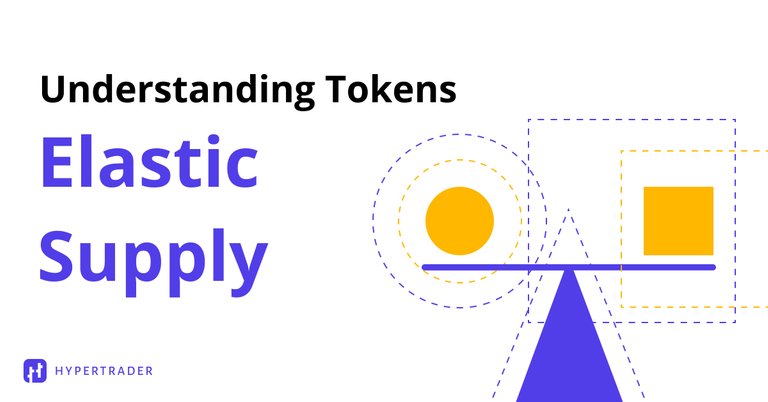Here Are Top 3 Elastic Supply Tokens

Let's first define Elastic tokens.
What Are Elastic Tokens?
When choosing crypto assets to diversify their portfolio, traders primarily rely on such key indicators as market capitalization, price chart, as well as maximum and circulating supply. Earlier, it was customary to divide all cryptocurrencies into two camps — with a fixed and an unlimited supply. For example, Bitcoin has a fixed maximum supply of 21 million coins, which makes the first cryptocurrency resistant to inflation. And Ethereum has an unlimited maximum supply, but only a certain number of coins can be mined in a set period.
But, with the development of decentralized finance, unique projects that have a dynamic (elastic) supply flooded the market. Elastic supply tokens are not like other cryptocurrencies, but rather have some similarities with stablecoins. Both types of assets strive to achieve the target price. But if stablecoins have a fixed amount that is backed by a fiat reserve, then elastic tokens tend to the target price with a dynamically changing supply. In addition, the price of an elastic token can be aimed at reaching the price of another crypto asset or a fiat currency, and in some cases to the price of the whole crypto market cap.

BASE Protocol ($BASE)
Base Protocol is a unique asset that is a kind of crypto market index. The BASE price is pegged to the total market capitalization of all cryptocurrencies in the ratio of 1:1 trillion. For example, at the time of writing, the total market capitalization of all cryptocurrencies is $1,947,287,791,346, and the price of one BASE token is $1.95. To support the pegging, the developers have implemented a rebase mechanism. The mission of Base Protocol is simple — to make it so that everyone can easily benefit from the performance of the entire cryptocurrency market in a secure, decentralized, and future-oriented way.

Origin Dollar ($OUSD)
Origin Dollar is a coin with a target price of $1 with an elastic supply. Origin is located on the Ethereum blockchain and is an ERC20 token. This is a stablecoin that is the best substitute for the dollar, that is, it allows you to send fast international payments and also reduces the fees that are usually imposed by traditional financial services. But the most interesting thing is that Origin Dollar allows you to increase your capital without making any effort. The user simply buys OUSD, stores it on one of the non-custodial Ethereum wallets, and receives 14.18% APY from DeFi yields protocols (Curve, Aave, Compound, and others) — no staking or lock-ups. The OUSD price is based on three stablecoins: USDT, USDC, and DAI.

Olympus ($OHM)
Olympus is a decentralized reserve cryptocurrency that aims to becom e the best replacement for stablecoins. So the price of a fiat currency depends on the state issuing it and can depreciate simultaneously the stablecoins pegged to this currency are also depreciated. In the case of Olympus, its price is algorithmically supported by a reserve of DAI tokens and other cryptocurrencies. Olympus differs from the elastic tokens listed earlier in that the rebasing mechanism will react only if the OHM price falls below $1 — the protocol buys and burns tokens to boost the price back to the target mark. But the important point is that while backed by $1 Olympus is not pegged to it. Thus, the price of the token can grow above $1, since the protocol does not impose a limit. A cryptocurrency similar to Olympus is its fork Wonderland.
Tokens with an elastic supply are a new stage in the development of decentralized finance. But this idea is still in its infancy.
Posted using Neoxian City